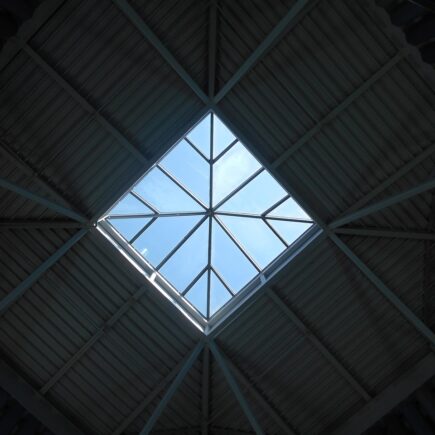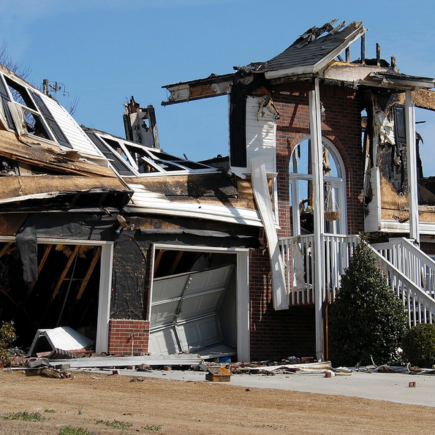Imagine waking up to the soft glow of sunlight streaming through your ceiling. The warmth of natural light fills every corner of your home, enhancing both mood and well-being. Skylights are more than just a design element; they can transform spaces, making them feel larger and more inviting. If you’ve ever considered adding skylights to your home, you’re in for a treat! But before diving into this exciting project, there are several essential factors to consider that will ensure you get the most out of your investment. Let’s explore how proper placement and maintenance can maximize natural light throughout your living space.
Factors to Consider Before Installing Skylights
Choosing the right location for your skylight is crucial. Think about which rooms would benefit most from natural light. Kitchens, living rooms, and hallways often thrive with added brightness. Consider the direction of sunlight in your home’s orientation. South-facing skylights tend to capture more sun throughout the day. Meanwhile, north-facing options provide consistent, diffused light without overheating spaces. You must also evaluate roof pitch and structure stability. A flat or low-pitched roof might require special installation techniques to prevent leaks. Don’t forget about local climate conditions too. Areas with heavy snowfall may need more robust framing to handle additional weight during winter months.
Best Placement Options for Maximum Natural Light
When it comes to skylights, placement is key. Consider the orientation of your home. South-facing windows capture sunlight throughout the day, maximizing natural light in living spaces. Think about room function as well. Kitchens and living rooms benefit from more light, making them ideal candidates for skylight installation. Avoid placing them directly over furniture or areas where glare could become an issue. Another option is installing multiple smaller skylights rather than one large unit. This approach allows for an even distribution of light while maintaining a balanced aesthetic in your home. Consider seasonal changes too; angle your skylights to catch those low winter rays without overheating during summer months. Integrating shades or diffusers can help control brightness when needed, ensuring comfort year-round.

Tips for Maintaining Skylights
Skylights can add a beautiful touch to your home, but they also require regular maintenance to stay in top shape. Start by inspecting the seals and frames for any signs of wear or damage. Addressing these issues early can prevent leaks and drafts. Clean the glass regularly using non-abrasive cleaners. Dust and grime can accumulate over time, blocking sunlight from entering your space. A soft cloth is ideal for achieving a streak-free shine. Check for condensation buildup between the panes if you have double-glazed skylights. This may indicate that seals are failing and could need replacement. Don’t forget about the surrounding area too! Trim back any branches or foliage that might obstruct natural light or cause debris to fall on your skylight. Keeping it clear enhances both aesthetics and functionality in your home environment.
Conclusion
Natural light has a remarkable ability to transform your home. It creates a warm and inviting atmosphere, enhancing the overall aesthetic of your living space. Skylights can significantly boost this effect by allowing sunlight to flood in. As you consider adding skylights to your home, remember that their placement is crucial for maximizing benefits. With thoughtful installation and regular maintenance, you’ll enjoy all the beauty and advantages that come with abundant natural light in your everyday life.…







 Traditional music and dance in Kenya serve as the heartbeat of its diverse cultures. Each community has unique rhythms that tell stories, celebrate milestones, or convey deep emotions. In ceremonies like weddings and initiations, live performances bring people together. The lively beats create an atmosphere of unity and joy. The use of traditional instruments such as the nyatiti or drums adds to the richness of these experiences. They evoke a sense of belonging among participants and spectators alike. Dance makes things much better; movements often mimic everyday activities or highlight historical events. It’s a medium for storytelling passed down through generations.
Traditional music and dance in Kenya serve as the heartbeat of its diverse cultures. Each community has unique rhythms that tell stories, celebrate milestones, or convey deep emotions. In ceremonies like weddings and initiations, live performances bring people together. The lively beats create an atmosphere of unity and joy. The use of traditional instruments such as the nyatiti or drums adds to the richness of these experiences. They evoke a sense of belonging among participants and spectators alike. Dance makes things much better; movements often mimic everyday activities or highlight historical events. It’s a medium for storytelling passed down through generations.




 Before delving into the logistics of starting a moving company, conduct thorough market research. Understand the demand for moving services in your target area, analyze your competitors, and identify any gaps or niches you can capitalize on. A solid understanding of the market landscape will guide your business strategy and help you position your moving company effectively..
Before delving into the logistics of starting a moving company, conduct thorough market research. Understand the demand for moving services in your target area, analyze your competitors, and identify any gaps or niches you can capitalize on. A solid understanding of the market landscape will guide your business strategy and help you position your moving company effectively..
 Customer satisfaction is paramount in the moving industry. Prioritize excellent customer service by being responsive to inquiries, providing clear communication, and addressing any concerns promptly. Going the extra mile to ensure a positive moving experience will result in satisfied customers who are likely to recommend your services to others. Starting a moving company requires a strategic approach, attention to detail, and a commitment to delivering exceptional service.
Customer satisfaction is paramount in the moving industry. Prioritize excellent customer service by being responsive to inquiries, providing clear communication, and addressing any concerns promptly. Going the extra mile to ensure a positive moving experience will result in satisfied customers who are likely to recommend your services to others. Starting a moving company requires a strategic approach, attention to detail, and a commitment to delivering exceptional service.

 Insurance adjusters act as an intermediary between homeowners and insurance companies during the claims process. They advocate for the homeowner’s best interests and work to negotiate a fair settlement. Adjusters are well-versed in insurance policies, coverage limits, and claim procedures. Their negotiations skills help ensure that homeowners receive the maximum possible compensation for their fire damage claims. Without the presence of an adjuster, homeowners may struggle to navigate the complex world of insurance contracts and may settle for less than what they deserve.
Insurance adjusters act as an intermediary between homeowners and insurance companies during the claims process. They advocate for the homeowner’s best interests and work to negotiate a fair settlement. Adjusters are well-versed in insurance policies, coverage limits, and claim procedures. Their negotiations skills help ensure that homeowners receive the maximum possible compensation for their fire damage claims. Without the presence of an adjuster, homeowners may struggle to navigate the complex world of insurance contracts and may settle for less than what they deserve.
 Who said that the wedding has to be all sitting and drinking? Setting up a lawn game station is the perfect way to get your guests out of their seats, mingle with each other and enjoy some friendly competition. From beanbag toss games to horseshoe or cornhole, these fun outdoor activities will give your wedding an extra fun twist. In fact, you can even turn it into a giant tournament with some prizes for the winners.
Who said that the wedding has to be all sitting and drinking? Setting up a lawn game station is the perfect way to get your guests out of their seats, mingle with each other and enjoy some friendly competition. From beanbag toss games to horseshoe or cornhole, these fun outdoor activities will give your wedding an extra fun twist. In fact, you can even turn it into a giant tournament with some prizes for the winners.
 Okay, those ideas are pretty cool, right? But what about the food? Well, an ice cream bar will do the job just fine. Who doesn’t love ice cream? Make your own DIY ice cream bar for guests to create their own custom creations. Set up an array of delicious flavors, mouth-watering toppings, and a selection of cones and waffle bowls. This way, your guests can get creative with making their favorite scoops of homemade ice cream. It’s a great way to let your guests have some fun.
Okay, those ideas are pretty cool, right? But what about the food? Well, an ice cream bar will do the job just fine. Who doesn’t love ice cream? Make your own DIY ice cream bar for guests to create their own custom creations. Set up an array of delicious flavors, mouth-watering toppings, and a selection of cones and waffle bowls. This way, your guests can get creative with making their favorite scoops of homemade ice cream. It’s a great way to let your guests have some fun.
 When buying baby clothes and accessories, you should always opt for materials that are soft and breathable. Natural fabrics like organic cotton or bamboo are comfortable and gentle on the skin. Cotton is especially important because it absorbs moisture quickly, which helps to keep your baby cool and dry. But it’s not always the case, depending on the climate. We’ll talk about it later. Lastly, avoid synthetic fabrics such as polyester since these can irritate delicate skin.
When buying baby clothes and accessories, you should always opt for materials that are soft and breathable. Natural fabrics like organic cotton or bamboo are comfortable and gentle on the skin. Cotton is especially important because it absorbs moisture quickly, which helps to keep your baby cool and dry. But it’s not always the case, depending on the climate. We’ll talk about it later. Lastly, avoid synthetic fabrics such as polyester since these can irritate delicate skin. Getting the right fit for baby clothes and accessories is important for two reasons: safety and comfort. Make sure that all of the clothing pieces you buy are not too tight or too loose since this can be a choking hazard. Furthermore, it’s also essential to find comfortable items that won’t irritate the skin. Not only is this important for babies, but it’s also the best for toddlers so they can move around freely.
Getting the right fit for baby clothes and accessories is important for two reasons: safety and comfort. Make sure that all of the clothing pieces you buy are not too tight or too loose since this can be a choking hazard. Furthermore, it’s also essential to find comfortable items that won’t irritate the skin. Not only is this important for babies, but it’s also the best for toddlers so they can move around freely. Who said that your baby can’t look cool? Of course, the safety and comfort of your little one should always come first. But it’s also important to choose pieces that are stylish and fun. After all, you want your baby to stand out from the crowd! Look for accessories like colorful bows or hats with funny characters that will make your baby look cute. All in all, when buying baby clothes and accessories, you should always take into account quality, safety, fit, climate, and style.
Who said that your baby can’t look cool? Of course, the safety and comfort of your little one should always come first. But it’s also important to choose pieces that are stylish and fun. After all, you want your baby to stand out from the crowd! Look for accessories like colorful bows or hats with funny characters that will make your baby look cute. All in all, when buying baby clothes and accessories, you should always take into account quality, safety, fit, climate, and style. This is key when trying to stay productive at
This is key when trying to stay productive at  Creating a schedule for your day is very important for staying productive while working from home with your kids. Choose specific times of the day designated for tasks such as work, playtime, and any other activities that need to be done. Not only will this help you stay on track with your tasks for the day, but it will also help your kids understand when it’s ok to interrupt you. Letting them know when they can expect some of your time and attention will make them feel valued and
Creating a schedule for your day is very important for staying productive while working from home with your kids. Choose specific times of the day designated for tasks such as work, playtime, and any other activities that need to be done. Not only will this help you stay on track with your tasks for the day, but it will also help your kids understand when it’s ok to interrupt you. Letting them know when they can expect some of your time and attention will make them feel valued and
 As of now, the world is finally getting a handle on the COVID-19 pandemic. In the US, the vaccine rollout has been going relatively smoothly, and cases are starting to decline. In Europe, meanwhile, countries are beginning to reopen their borders and economies. And in China, where the pandemic started, things are finally returning to normal. All of this progress means that by Christmas 2022, the pandemic will be well under control. It will allow people to finally relax and enjoy the holiday without worrying about getting sick.
As of now, the world is finally getting a handle on the COVID-19 pandemic. In the US, the vaccine rollout has been going relatively smoothly, and cases are starting to decline. In Europe, meanwhile, countries are beginning to reopen their borders and economies. And in China, where the pandemic started, things are finally returning to normal. All of this progress means that by Christmas 2022, the pandemic will be well under control. It will allow people to finally relax and enjoy the holiday without worrying about getting sick. The best reason to look forward to Christmas 2022 is that you’ll finally be able to spend time with loved ones again. After a year of being cooped up at home, many people long for human interaction. And what better way to get it than by spending time with family and friends during the holidays? If you’re looking for a reason to celebrate Christmas 2022, these are just a few reasons to do so. From the end of the COVID-19 pandemic to a booming economy, there’s a lot to look forward to. So, start making your plans now and prepare for a memorable Christmas.…
The best reason to look forward to Christmas 2022 is that you’ll finally be able to spend time with loved ones again. After a year of being cooped up at home, many people long for human interaction. And what better way to get it than by spending time with family and friends during the holidays? If you’re looking for a reason to celebrate Christmas 2022, these are just a few reasons to do so. From the end of the COVID-19 pandemic to a booming economy, there’s a lot to look forward to. So, start making your plans now and prepare for a memorable Christmas.…
 Before making any investment, it is important to do your research. It is especially true in the volatile world of cryptocurrencies. Understand each coin’s risks and potential rewards before investing any money.
Before making any investment, it is important to do your research. It is especially true in the volatile world of cryptocurrencies. Understand each coin’s risks and potential rewards before investing any money. When storing your cryptocurrencies, it is important to use a
When storing your cryptocurrencies, it is important to use a  When working with a partner, choosing someone you can trust is important. It’s especially true when dealing with finances. When buying, selling, or trading cryptocurrencies, select a reputable company or individual. There are many scams in the space, so it is essential to be cautious.
When working with a partner, choosing someone you can trust is important. It’s especially true when dealing with finances. When buying, selling, or trading cryptocurrencies, select a reputable company or individual. There are many scams in the space, so it is essential to be cautious.
 When you have a child, you can’t always protect them from the
When you have a child, you can’t always protect them from the  Sometimes employees will leak company information and sell it to your competitors. Or your children might accidentally share sensitive information with strangers online. With an Android keylogger, you can see everything that’s being typed on the phone, so you can quickly catch any leaks and prevent them from happening again. Just like what Mr. Willy Wonka in Charlie and the Chocolate Factory has felt, every worker is a liability when you’ve shared company secrets with them.
Sometimes employees will leak company information and sell it to your competitors. Or your children might accidentally share sensitive information with strangers online. With an Android keylogger, you can see everything that’s being typed on the phone, so you can quickly catch any leaks and prevent them from happening again. Just like what Mr. Willy Wonka in Charlie and the Chocolate Factory has felt, every worker is a liability when you’ve shared company secrets with them.

 The rocker profile of a wakeboard is the curve of the board when it is seen from the side. There are three different types of rockers- continuous, hybrid, and three-stage. A constant rocker has a curved shape that is consistent throughout the length of the board. A hybrid rocker has a combination of continuous and three-stage curves. A three-stage rocker is the most common type, and it has a curved shape that becomes more pronounced towards the tips of the board.
The rocker profile of a wakeboard is the curve of the board when it is seen from the side. There are three different types of rockers- continuous, hybrid, and three-stage. A constant rocker has a curved shape that is consistent throughout the length of the board. A hybrid rocker has a combination of continuous and three-stage curves. A three-stage rocker is the most common type, and it has a curved shape that becomes more pronounced towards the tips of the board.
 Furthermore, if the platform is well-known enough, they have already built trust with potential customers. This can help your company reach a wider audience than it could on its own. The platform also offers access to new markets that you may not have otherwise had access to. You can save time and resources by outsourcing to a marketplace that manages everything for you! The benefits of simplifying your business processes are endless. You can focus on what makes your company great rather than spending valuable time promoting it.
Furthermore, if the platform is well-known enough, they have already built trust with potential customers. This can help your company reach a wider audience than it could on its own. The platform also offers access to new markets that you may not have otherwise had access to. You can save time and resources by outsourcing to a marketplace that manages everything for you! The benefits of simplifying your business processes are endless. You can focus on what makes your company great rather than spending valuable time promoting it. A B2B marketplace can help reduce your operational costs. You will no longer have to spend valuable time and resources finding new business opportunities or managing suppliers. The platform offers access to thousands of potential partners that would otherwise be out of reach for your company. You can also take advantage of the discounts that the marketplace offers its partners. This can save you a significant amount of money in the long run.
A B2B marketplace can help reduce your operational costs. You will no longer have to spend valuable time and resources finding new business opportunities or managing suppliers. The platform offers access to thousands of potential partners that would otherwise be out of reach for your company. You can also take advantage of the discounts that the marketplace offers its partners. This can save you a significant amount of money in the long run.
 When choosing the best catering service, you need to list several names. To shorten the list, you need to decide what types of food you prefer. Do you want a traditional sit-down meal or something more casual? Keep in mind that if your party is going to be held outdoors, it will probably make the most sense to choose a catering company that can provide buffet-style services.
When choosing the best catering service, you need to list several names. To shorten the list, you need to decide what types of food you prefer. Do you want a traditional sit-down meal or something more casual? Keep in mind that if your party is going to be held outdoors, it will probably make the most sense to choose a catering company that can provide buffet-style services. If you’re lucky enough to live in a town with several catering companies, then it will probably be best if you do some research on the different ones. While searching, make sure that they have good reviews, and their reputation is vital. Check out the online review sites like Yelp or Google Plus to see what previous clients said about the catering service.
If you’re lucky enough to live in a town with several catering companies, then it will probably be best if you do some research on the different ones. While searching, make sure that they have good reviews, and their reputation is vital. Check out the online review sites like Yelp or Google Plus to see what previous clients said about the catering service.
 As things have not gone back to their normal conditions, people still have more time at home than anywhere else. This has been where the advantage of online stores with strong SEO was built. When an entity has efficient SEO, they are top ranked in search engines.
As things have not gone back to their normal conditions, people still have more time at home than anywhere else. This has been where the advantage of online stores with strong SEO was built. When an entity has efficient SEO, they are top ranked in search engines. The only limit to your business is the lack of internet in some other parts of the globe. For land-based businesses, they have only the local consumers to contend with. While for
The only limit to your business is the lack of internet in some other parts of the globe. For land-based businesses, they have only the local consumers to contend with. While for 
 It makes sense that the first factor you should consider when looking for an ideal jewelry online store is jewelry. It is essential to state that different people usually have different preferences when it comes to jewelry. The kind of jewelry you may fancy may not be what other people are looking for.
It makes sense that the first factor you should consider when looking for an ideal jewelry online store is jewelry. It is essential to state that different people usually have different preferences when it comes to jewelry. The kind of jewelry you may fancy may not be what other people are looking for. The list will be incomplete without mentioning money. Most people who have bought jewelry will agree that they do not come cheaply as some may think. You need to ensure that the jewelry store you select is selling jewelry you can comfortably afford.
The list will be incomplete without mentioning money. Most people who have bought jewelry will agree that they do not come cheaply as some may think. You need to ensure that the jewelry store you select is selling jewelry you can comfortably afford.
 If you know an attorney, confer to him about your case. If he is a
If you know an attorney, confer to him about your case. If he is a  Lawyers.com can be an option. Its list of attorneys is a long one. You should go over their expertise, experience, education, and training. But as important are the customer and peer reviews. Of course, you should consider the lawyers near you before those who are outside your city.
Lawyers.com can be an option. Its list of attorneys is a long one. You should go over their expertise, experience, education, and training. But as important are the customer and peer reviews. Of course, you should consider the lawyers near you before those who are outside your city.
 They can be collected as they open the hat’s veil. That is when the membrane just below them begins to tear. The ideal would be to anticipate this as much as possible so that the mushroom does not release its spores in the kit. Some mushrooms tend to grow faster than others, so the best is to collect them as they are ready and let the others grow.
They can be collected as they open the hat’s veil. That is when the membrane just below them begins to tear. The ideal would be to anticipate this as much as possible so that the mushroom does not release its spores in the kit. Some mushrooms tend to grow faster than others, so the best is to collect them as they are ready and let the others grow.



 When choosing a contractor, you must be very keen to pick someone who will offer professional services. When it comes to investing in a new heating and air conditioning system, it is critical for you to hire a qualified person to install the system or do repairs.
When choosing a contractor, you must be very keen to pick someone who will offer professional services. When it comes to investing in a new heating and air conditioning system, it is critical for you to hire a qualified person to install the system or do repairs.
 however, only was available in the red color which was widely used as an electric component. It was not until later on that the other colorings like blue and green were offered, alongside phosphoric techniques which were utilized to produce other types of color, such as infrared and ultraviolet lighting.
however, only was available in the red color which was widely used as an electric component. It was not until later on that the other colorings like blue and green were offered, alongside phosphoric techniques which were utilized to produce other types of color, such as infrared and ultraviolet lighting. LED light bulbs are very popular for their capability to last much longer compared to incandescent lamps and also more than ten times longer compared to fluorescent lighting. See the complete LED chart with reviews in case you have any doubt.
LED light bulbs are very popular for their capability to last much longer compared to incandescent lamps and also more than ten times longer compared to fluorescent lighting. See the complete LED chart with reviews in case you have any doubt.
 relies profoundly on what it is employed for. The lightweight vacuums have diverse capabilities that mean that while some can hold more dust, others cannot. If you wish to use the handheld vacuum cleaner on a frequent basis, choose the vacuum that has a larger capacity. As portable cleaners are small, choosing the one with huge capacity will prove to be the best decision.
relies profoundly on what it is employed for. The lightweight vacuums have diverse capabilities that mean that while some can hold more dust, others cannot. If you wish to use the handheld vacuum cleaner on a frequent basis, choose the vacuum that has a larger capacity. As portable cleaners are small, choosing the one with huge capacity will prove to be the best decision. Further, the battery time of the best lightweight vacuum cleaner for pet hairs needs to be considered. These cleaners may be cordless or with cords. The cordless vacuums run on battery and require proper charging at regular intervals. Most of the rechargeable vacuum cleaner for pet hairs cleaners will last for about 3 to 30 minutes before the need to get restored.
Further, the battery time of the best lightweight vacuum cleaner for pet hairs needs to be considered. These cleaners may be cordless or with cords. The cordless vacuums run on battery and require proper charging at regular intervals. Most of the rechargeable vacuum cleaner for pet hairs cleaners will last for about 3 to 30 minutes before the need to get restored.
 your business operations, you should know that not all of them can be good. Each of the software that you will find in the markets has been made to specifically manage certain operations. Before you make a choice, you should first understand what your business needs. Sometimes, you might just fin doubt that what is best for others is not even close to what an expert would recommend for your organization
your business operations, you should know that not all of them can be good. Each of the software that you will find in the markets has been made to specifically manage certain operations. Before you make a choice, you should first understand what your business needs. Sometimes, you might just fin doubt that what is best for others is not even close to what an expert would recommend for your organization repair the technical problems yet your clients are waiting for services. Without the right software, you might just end up incurring losses and causing a lot of damage to your organization. The best systems are those that give you real-time access because, in such a situation, you do not have to look any further.
repair the technical problems yet your clients are waiting for services. Without the right software, you might just end up incurring losses and causing a lot of damage to your organization. The best systems are those that give you real-time access because, in such a situation, you do not have to look any further.
 laptop backpack is that one which has been designed with the laptop compartments. The laptop compartments offer additional protection to the notebook.
laptop backpack is that one which has been designed with the laptop compartments. The laptop compartments offer additional protection to the notebook. Different designers have come up with various designs of the computer backpacks. The method of carrying is, therefore, different for the different kinds of backpacks. When you are carrying your laptop for a long distance, then you need a bag that is heavy-duty and padded on the shoulders. This will reduce the tension in your shoulders and back and also help support your posture. You should also consider buying the laptop bag that has reinforced straps and one that has extra layers of protection.…
Different designers have come up with various designs of the computer backpacks. The method of carrying is, therefore, different for the different kinds of backpacks. When you are carrying your laptop for a long distance, then you need a bag that is heavy-duty and padded on the shoulders. This will reduce the tension in your shoulders and back and also help support your posture. You should also consider buying the laptop bag that has reinforced straps and one that has extra layers of protection.…
 consultant to work with you in boosting your website is because an SEO consultant is a specialist in this field. In any form of business, expertise is an essential element and thus the need to choose an expert in SEO subject matters. Working on your own is not the best practice since you are not an expert in this field. Stick to what you are good at and let the SEO consultants do their work.
consultant to work with you in boosting your website is because an SEO consultant is a specialist in this field. In any form of business, expertise is an essential element and thus the need to choose an expert in SEO subject matters. Working on your own is not the best practice since you are not an expert in this field. Stick to what you are good at and let the SEO consultants do their work. If you are results oriented, then you need to work with SEO experts. They set a target for your website and works towards achieving this goal within the stipulated period. Therefore, you will have a site that gets good ranking and thus work to increase traffic flowing into it.
If you are results oriented, then you need to work with SEO experts. They set a target for your website and works towards achieving this goal within the stipulated period. Therefore, you will have a site that gets good ranking and thus work to increase traffic flowing into it.

 To help yourself to the most benefits of digital marketing, allow the following tips to guide you along the way. Hire a professional, reputable Digital Marketing Agency Social Media is your friend. Use these sites to your advantage for your digital marketing needs. Create Twitter hashtag campaigns, and of course get in on the fun with Facebook. Focus on your customer, and forget what you want. Your campaign is, after all, for your clients and not yourself. When you concentrate on the needs and wants of the customer, you benefit your brand considerably. Engage with your customers on every avenue possible, especially social media. Customers want to feel like they are a part of your brand, and with business engagement, you put them at the forefront of a great relationship.…
To help yourself to the most benefits of digital marketing, allow the following tips to guide you along the way. Hire a professional, reputable Digital Marketing Agency Social Media is your friend. Use these sites to your advantage for your digital marketing needs. Create Twitter hashtag campaigns, and of course get in on the fun with Facebook. Focus on your customer, and forget what you want. Your campaign is, after all, for your clients and not yourself. When you concentrate on the needs and wants of the customer, you benefit your brand considerably. Engage with your customers on every avenue possible, especially social media. Customers want to feel like they are a part of your brand, and with business engagement, you put them at the forefront of a great relationship.…
 regular basis. Make sure not to keep the trash in the back of your seat for days. Dumping the trash from your car will cut down the cleaning time and make your car look neat and clean. Though it sounds easy, a lot of people fail to clear these trash like brochures, newspapers and so on.
regular basis. Make sure not to keep the trash in the back of your seat for days. Dumping the trash from your car will cut down the cleaning time and make your car look neat and clean. Though it sounds easy, a lot of people fail to clear these trash like brochures, newspapers and so on. You can use a soft cloth to clean the dashboard and other timber or plastic parts of your car. Take the soft cloth and a little amount of laundry detergent and gently rub the dashboard and then dry it using a dry soft cloth. Spray plastic and timber polish after that. On the stereo system you need to use soft brush to spread the polish. You have to wipe it with a dry soft cloth to make your dashboard shinier.…
You can use a soft cloth to clean the dashboard and other timber or plastic parts of your car. Take the soft cloth and a little amount of laundry detergent and gently rub the dashboard and then dry it using a dry soft cloth. Spray plastic and timber polish after that. On the stereo system you need to use soft brush to spread the polish. You have to wipe it with a dry soft cloth to make your dashboard shinier.…
 ool is not as easy as you might think. It involves a lot of work and great focus to details to ensure that it is cleaned thoroughly. This is something you might not be able to do if you decide to perform the project by yourself. Professional cleaning services have the skills and knowledge on how to do the cleaning. They know where to begin and where to end during the cleaning process. You can be assured that they will not stop doing the cleaning until you are totally satisfied with their work.
ool is not as easy as you might think. It involves a lot of work and great focus to details to ensure that it is cleaned thoroughly. This is something you might not be able to do if you decide to perform the project by yourself. Professional cleaning services have the skills and knowledge on how to do the cleaning. They know where to begin and where to end during the cleaning process. You can be assured that they will not stop doing the cleaning until you are totally satisfied with their work. ng experts apply the right cleaning techniques that ensure great results. They have undergone through pool cleaning training. You can be assured they will use the most updated techniques when working on your project. This will also ensure that no time is wasted during the cleaning process.
ng experts apply the right cleaning techniques that ensure great results. They have undergone through pool cleaning training. You can be assured they will use the most updated techniques when working on your project. This will also ensure that no time is wasted during the cleaning process.
 Restumping or reblocking is no easy task. It is crucial that you hire the services of specialists to make sure that the job will be done properly. And since the structural integrity of your home greatly relies on this process, you have to choose the right restumping specialists. Otherwise, you will end up with more problems with the foundation and structure of your home, which will cost you more money in the long run. Therefore, you have to be very careful when hiring a team of restumping specialists.
Restumping or reblocking is no easy task. It is crucial that you hire the services of specialists to make sure that the job will be done properly. And since the structural integrity of your home greatly relies on this process, you have to choose the right restumping specialists. Otherwise, you will end up with more problems with the foundation and structure of your home, which will cost you more money in the long run. Therefore, you have to be very careful when hiring a team of restumping specialists. In order for you to check the previous projects of the restumping companies that you are choosing from, ask them for references. Contact their past clients and ask them about the job that they have accomplished.
In order for you to check the previous projects of the restumping companies that you are choosing from, ask them for references. Contact their past clients and ask them about the job that they have accomplished.



 No piece of equipment stored in a facility will do any good if the team of workers doesn’t know how to use it properly. That’s why training for every new employee, as well as continuing education for all continued employees, needs to be a required part of the company expectations. Structured, appropriate training times should then be followed up through a system of accountability. Supervisors checking in to be sure the employees know how to use the safety gear – and are in fact using it – could be the difference between life and death.
No piece of equipment stored in a facility will do any good if the team of workers doesn’t know how to use it properly. That’s why training for every new employee, as well as continuing education for all continued employees, needs to be a required part of the company expectations. Structured, appropriate training times should then be followed up through a system of accountability. Supervisors checking in to be sure the employees know how to use the safety gear – and are in fact using it – could be the difference between life and death. Railings – stair railings and hand rails to hold on to when walking up or down stairs
Railings – stair railings and hand rails to hold on to when walking up or down stairs
 air. Make sure that the gaming chair that you buy offers you the needed comfort. Before buying a chair ask to sit on it for a while and check whether it is comfortable for you.
air. Make sure that the gaming chair that you buy offers you the needed comfort. Before buying a chair ask to sit on it for a while and check whether it is comfortable for you. ace availability
ace availability
 For instance, we have the free standing and the mounted marquee. We also have the open marquee as well as those that have closed walls.
For instance, we have the free standing and the mounted marquee. We also have the open marquee as well as those that have closed walls. y from the norm
y from the norm
 If you try to look for funny pictures, I am pretty sure you can find them everywhere. However, the best place where you can see them is on the Internet. If you get online and utilize the search engines, you can simply type in ‘funny pictures’ and you will certainly be flooded with thousands of images that would lighten up your day.
If you try to look for funny pictures, I am pretty sure you can find them everywhere. However, the best place where you can see them is on the Internet. If you get online and utilize the search engines, you can simply type in ‘funny pictures’ and you will certainly be flooded with thousands of images that would lighten up your day. Now that the different social media networking sites have become popular among all ages, funny pictures have also conquered the world of Facebook and the other sites that are frequently used by a lot of people. If you have an account, you will notice when you check your news feeds that some of your friends or friends of your friends are posting some funny images. You can forward them to your close friends to cheer them up or to simply make them smile early in the morning.…
Now that the different social media networking sites have become popular among all ages, funny pictures have also conquered the world of Facebook and the other sites that are frequently used by a lot of people. If you have an account, you will notice when you check your news feeds that some of your friends or friends of your friends are posting some funny images. You can forward them to your close friends to cheer them up or to simply make them smile early in the morning.…
 unting must take into consideration the deformation of the o-ring. The amount of stress, which is mechanical in nature, should be of a precisely calculated amount at the o-ring contacting surface with the mounting. In principle, the fluid pressure that is contained must not be greater than the stress that is imposed on the o-ring.
unting must take into consideration the deformation of the o-ring. The amount of stress, which is mechanical in nature, should be of a precisely calculated amount at the o-ring contacting surface with the mounting. In principle, the fluid pressure that is contained must not be greater than the stress that is imposed on the o-ring. dynamic environments. An exceedingly rough finish to the surface of the contact parts will cause abrasion to the surface of the o-ring. On the other hand, the sealing would not be sufficiently lubricated by the fluid film in the situation that the surfaces that come into contact are exceedingly smooth.
dynamic environments. An exceedingly rough finish to the surface of the contact parts will cause abrasion to the surface of the o-ring. On the other hand, the sealing would not be sufficiently lubricated by the fluid film in the situation that the surfaces that come into contact are exceedingly smooth.
 Having a license ensures the credibility and knowledge of the contractor. The general contractor must possess a minimum amount of experience and must pass some tests before obtaining the license.
Having a license ensures the credibility and knowledge of the contractor. The general contractor must possess a minimum amount of experience and must pass some tests before obtaining the license. tor must be willing to have a written agreement in place. You must ensure that the terms are clear, in writing and your personal interests are protected. While oral agreements can be used, it is advisable to have formal written contract that shows clear communication between you and the contractor.
tor must be willing to have a written agreement in place. You must ensure that the terms are clear, in writing and your personal interests are protected. While oral agreements can be used, it is advisable to have formal written contract that shows clear communication between you and the contractor.

 Mobile Friendly?
Mobile Friendly?
 plumbing pipes. These bushings are made of rubber, and hence, are also known as rubber sealants.
plumbing pipes. These bushings are made of rubber, and hence, are also known as rubber sealants. The final application of industrial seals is in the field of construction. Cement is a material that hardens when water is mixed with it. Additionally, cement, when mixed with materials like fine aggregate, coarse aggregate, and water, becomes concrete. Concrete inherently has problems because it does not dry uniformly. To save concrete from having pores, construction seals, like putty, silicone, paints, etc. are applied so that the pores are closed.
The final application of industrial seals is in the field of construction. Cement is a material that hardens when water is mixed with it. Additionally, cement, when mixed with materials like fine aggregate, coarse aggregate, and water, becomes concrete. Concrete inherently has problems because it does not dry uniformly. To save concrete from having pores, construction seals, like putty, silicone, paints, etc. are applied so that the pores are closed.
 nd simple design. It resembles Razer Mamba as it has the same button layout and curves. The DPI switch is also placed in the same position under the scroll wheel like the Razer Mamba. The mouse has an impressive ergonomic shape that makes it lighter than other gaming mice, especially in this category.
nd simple design. It resembles Razer Mamba as it has the same button layout and curves. The DPI switch is also placed in the same position under the scroll wheel like the Razer Mamba. The mouse has an impressive ergonomic shape that makes it lighter than other gaming mice, especially in this category. show settings that are most stable and accurate. They have also made sure that the design of the circuitry has the least possible latency.
show settings that are most stable and accurate. They have also made sure that the design of the circuitry has the least possible latency.
 webinars. Without a doubt, these are the factors that really helped them get started on the growing business of email marketing.
webinars. Without a doubt, these are the factors that really helped them get started on the growing business of email marketing. With that said, the general tip of Inbox Blueprint 2.0 is crystallized by its focus on really setting first-time marketers on the right path to take. Internet marketing, after all, is all about efficiency. Time is your most important resource in everything you do.
With that said, the general tip of Inbox Blueprint 2.0 is crystallized by its focus on really setting first-time marketers on the right path to take. Internet marketing, after all, is all about efficiency. Time is your most important resource in everything you do.

 sharpen your SEO research so as to run a well-posted business website. You can use the Google AdWords keyword planner to find the average number of monthly searches as well as the competition for a certain keyword.
sharpen your SEO research so as to run a well-posted business website. You can use the Google AdWords keyword planner to find the average number of monthly searches as well as the competition for a certain keyword. If your phone breaks or malfunctions, iphone repair services can help you fix it. If you think about the cost of buying a new one against the price of repairing your existing unit you will find that you can save a lot of money even if the damage is substantial.
If your phone breaks or malfunctions, iphone repair services can help you fix it. If you think about the cost of buying a new one against the price of repairing your existing unit you will find that you can save a lot of money even if the damage is substantial.
 r instance when doing some repair in your home or office. You can use a knife as a screwdriver if you do not have one. You can also use it to scrap unwanted paint, rust, and labels. A pocket knife is, therefore, a very good substitute for any tool that you may not have at a moment.
r instance when doing some repair in your home or office. You can use a knife as a screwdriver if you do not have one. You can also use it to scrap unwanted paint, rust, and labels. A pocket knife is, therefore, a very good substitute for any tool that you may not have at a moment. can use the knife to cut a rope, make small pieces of sticks on the farm or anywhere and smooth wood.
can use the knife to cut a rope, make small pieces of sticks on the farm or anywhere and smooth wood.

 better brains that support the business just when you need it. Unlike starting in-house projects, your business does not need to train and monitor the operations of its team members.
better brains that support the business just when you need it. Unlike starting in-house projects, your business does not need to train and monitor the operations of its team members.